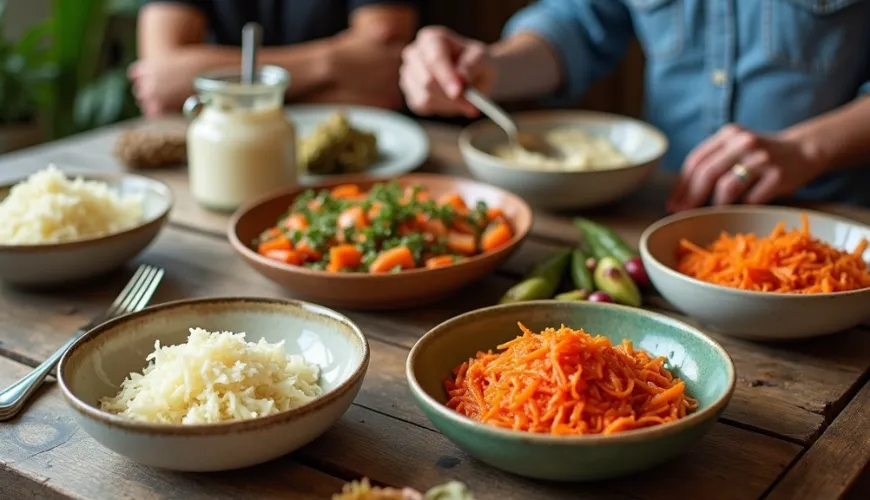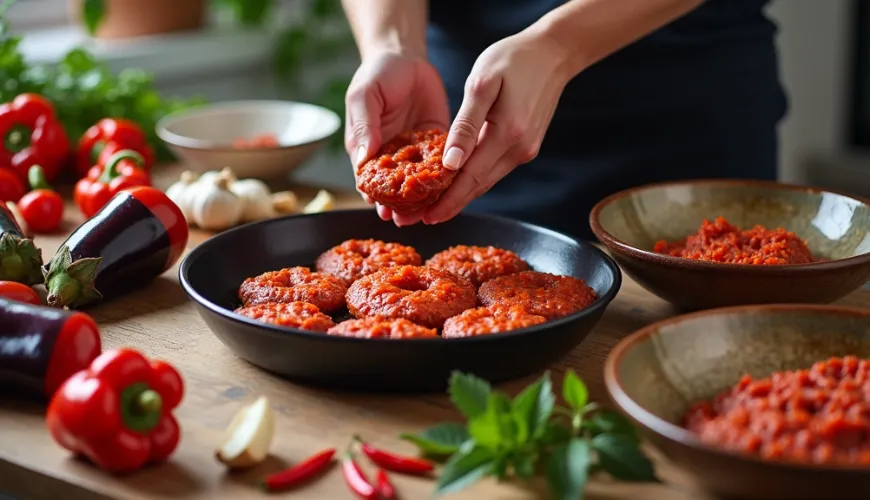
How to Make Béchamel, the Sauce That Will Transform Your Cooking Experience

The Secret to Perfect Béchamel - A Creamy Base Not Just for Lasagna
Every kitchen has recipes that are passed down from generation to generation. Whether it's festive cakes, family stews, or homemade pasta, it's often the simplicity and honesty of the ingredients that make a dish unforgettable. One of these traditional bases is béchamel, a creamy sauce that is not only a culinary classic but also a pillar of many beloved dishes — including the famous lasagna recipe.
Béchamel sauce, also known as white sauce, has its origins in French cuisine but has established its position throughout Europe. In Italy, where it is a common component of traditional lasagna, it's called "besciamella." Its delicate taste, velvety consistency, and versatility make it a staple in home cooking. Whether you're preparing lasagna, baked vegetables, moussaka, or gratin potatoes, béchamel adds creaminess and depth of flavor to every dish.
How to Make Béchamel? A Recipe Anyone Can Master
Although béchamel may seem complicated, its preparation is actually quite simple. You only need three basic ingredients: butter, flour, and milk. The key to success is primarily patience and constant stirring, which prevents lumps from forming.
For a simple béchamel base, take equal amounts of butter and plain flour — 50 grams of each is enough. Let the butter melt slowly, mix in the flour, and lightly fry to create a light roux. Then gradually add half a liter of whole milk while continuously stirring to prevent lumps. Finally, season with salt, white pepper, and optionally nutmeg, if you like.
Procedure: First, melt the butter in a pot. Once melted, stir in the flour and let it "rest" — about 1–2 minutes, until it starts to turn slightly golden. Then gradually add the milk, ideally warmed, and stir constantly with a whisk. Once the sauce thickens, season it to taste with salt, pepper, and nutmeg. And it's done.
This simple sauce hides surprisingly many possibilities. You can enrich it with grated cheese to create a cheesy version, perfect for baked pasta. Or you can soften it with plant milk and use it in plant-based cooking.
Béchamel and Lasagna - A Combination That Works
If we had to name one dish where béchamel is an irreplaceable component, it would undoubtedly be lasagna with béchamel. Classic Bolognese lasagna, known as "lasagne alla Bolognese," combines layers of thin pasta with meat ragù and béchamel sauce, which adds moistness and harmony of flavors to the whole portion.
Preparing lasagna with béchamel isn't difficult, but it requires some time and planning. The basis is a quality meat ragù, homemade béchamel, and of course, pasta sheets — ideally fresh, but dried ones that are briefly boiled or don't need to be cooked will also do well.
An example from practice? In an Italian family in the Emilia-Romagna area, where the original lasagna recipe comes from, they are commonly prepared on weekends when the family has time to sit at one table. Every family member has a role in the preparation — someone makes the dough, another cooks the ragù, and another stirs the béchamel. The result is a hearty yet delicate dish that symbolizes family sharing and tradition.
What Makes a Good Béchamel for Lasagna?
When someone mentions "béchamel for lasagna," some people imagine just a milky sauce meant to moisten the pasta. But béchamel does much more in lasagna. It binds the layers, softens the texture of the meat and pasta, and creates a creamy mouthful that melts on the tongue.
At the same time, it acts as a binder — keeping the individual components of the lasagna together, so they don't fall apart when served. Therefore, it's essential for the béchamel to be thick enough but not too stiff. The consistency should be such that the sauce slowly drips off the spoon. A béchamel that's too thin could cause the lasagna to become soggy, while one that's too thick would weigh it down unnecessarily.
The choice of milk is also important. Whole milk gives the sauce fullness and creaminess, while skimmed versions may lead to a less rich taste. In vegetarian or lactose-free versions, plant-based milks like oat or almond can be successfully used, but it's always necessary to choose one with a neutral flavor.
Tips for Perfect Lasagna with Béchamel
Everyone has their favorite lasagna recipe, but some tricks can help elevate your home cooking to a new level.
- Use fresh ingredients. Quality butter, whole milk, and freshly grated nutmeg make a difference.
- Cook the béchamel patiently. Don't rush and let the sauce thicken slowly. This prevents lumps and ensures a smooth consistency.
- Don't be afraid to layer. Ideal lasagna has at least three to four layers, alternating ragù, pasta, and béchamel.
- Baking is key. The last layer of béchamel and cheese creates a golden crust during baking that is visually and tastefully irresistible.
As the renowned French chef Auguste Escoffier said: "Perfection is hidden in simplicity." And béchamel is proof of that. Three basic ingredients, but endless possibilities for use.
In modern kitchens today, we also find lighter or vegan versions of béchamel, which work with plant fats and gluten-free flour. These variants also find their place — whether due to intolerances, ethical choices, or just a craving for change. But the base remains the same: the desire for a delicate, nutritious, and comforting sauce that gives dishes a new dimension.
If you've so far only considered béchamel as "something for lasagna," maybe it's time to look at it differently. Try it in gratin broccoli, with fish, or instead of cream in mashed potatoes. The possibilities are nearly endless. And you might discover that béchamel is not just a sauce — it's a small culinary miracle hidden in everyday ingredients.

